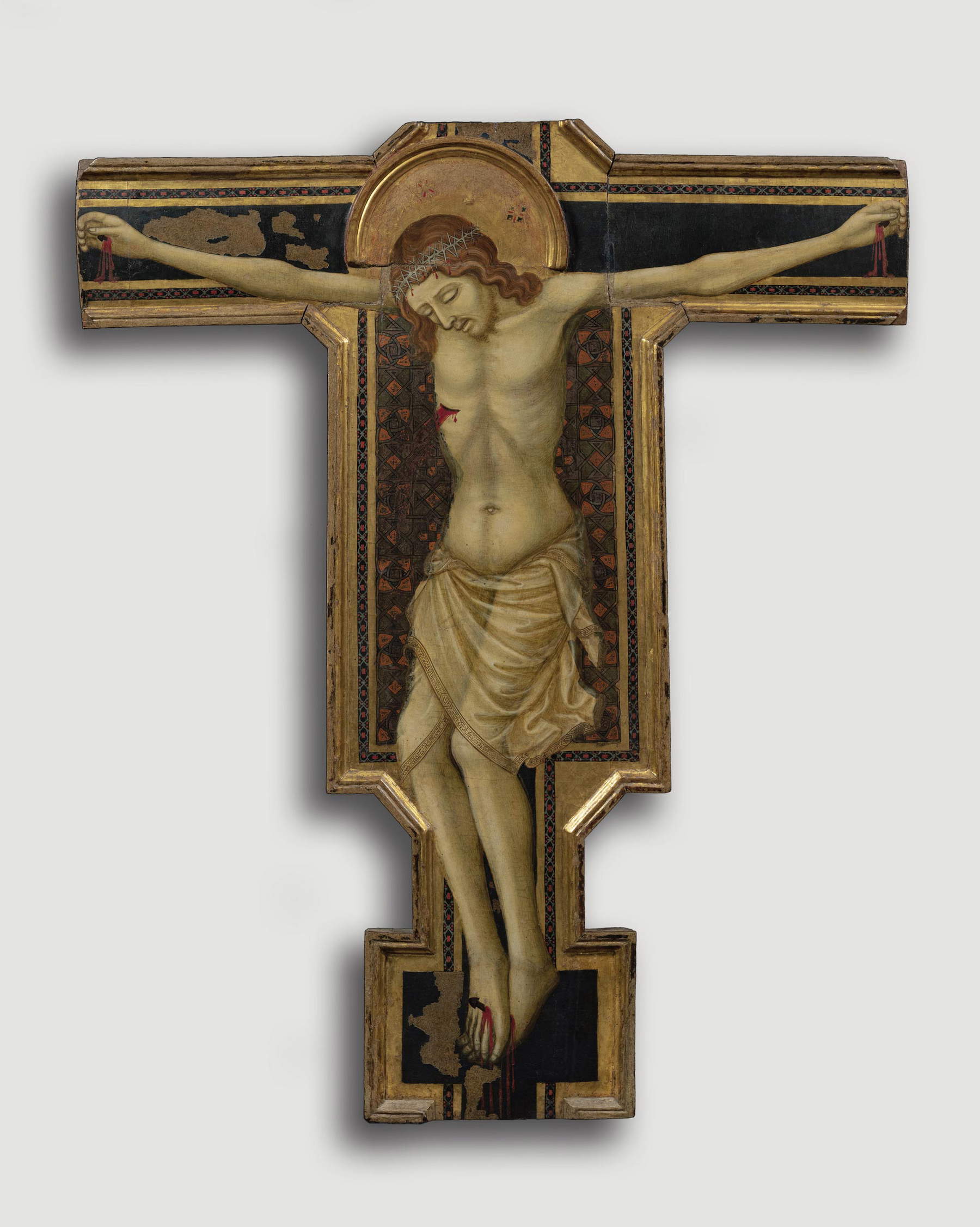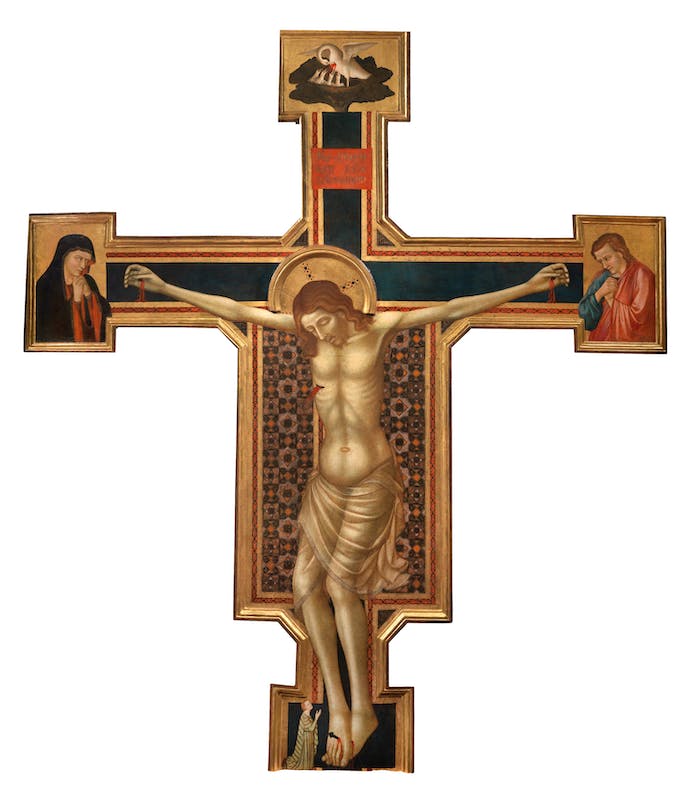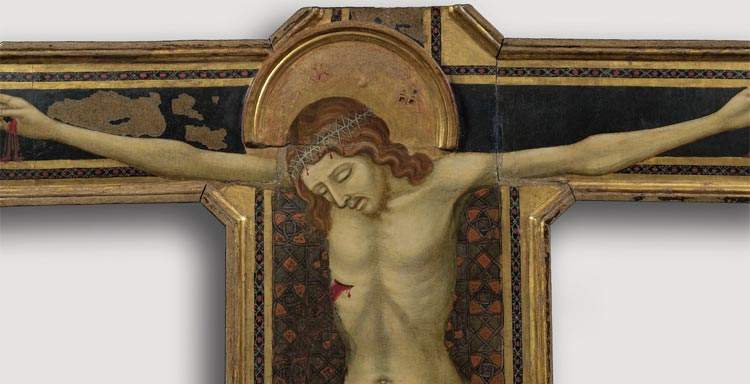A new work joins the collections of the Accademia Gallery in Florence. In fact, the Florentine museum purchased, during the 2022 edition of the Florence Biennale Internazionale dell’Antiquariato held at Palazzo Corsini, a painted crucifix dating back to the first quarter of the 14th century, known as the Corsi Crucifix, which visitors will be able to admire from tomorrow inside the rooms on the ground floor, alongside paintings by leading Florentine artists active between the 13th and 14th centuries.
The crucifix for now is anonymous and is the namepiece (i.e., work naming the author) of the Master of the Corsi Crucifix: the attribution is due to Richard Offner, in 1931, who described it as “a painter of dramatic talent,” trained in close contact with the Master of the Santa Cecilia. The Crucifix came from the rich collection that engineer Arnaldo Corsi left to the City of Florence in 1938. It was on the antiques market in 1952 and has since passed through the hands of various estates, was attached to various private collections between the Tuscan capital, Milan and Venice, before arriving, today, at the Galleria dell’Accademia in Florence, through antiquarian Fabrizio Moretti.

Thanks to the attribution of the Corsi Crucifix, another painted cross preserved in the Uffizi and very similar to this one in many respects was identified as being by the same author: it is a larger work that, until 1782, was in the church of San Pier Scheraggio in Florence, incorporated into the Uffizi complex in the 16th century. Having come to the Uffizi itself in 1782, in 1919 it was transferred to the Galleria dell’Accademia, where it was located in the Gallery’s exhibition itinerary, in the ground-floor rooms devoted to the thirteenth and fourteenth centuries, and later published in the scientific catalogs of the museum’s collections. In 2019 it returned to the Uffizi following a restoration.
The Corsi Crucifix, a tempera on panel, arrived at the Accademia Gallery in a good state of preservation, although missing some parts such as the side terminals and the upper arm with its cymatium, where a mystical Pelican is presumed to have been depicted in the act of feeding the little ones with his blood, an allegory of Christ, who died for the redemption of humanity. The left terminal, with the effigy of the mourning Virgin, was identified in the 1980s by Milan Boskovits in a private collection: although in poor condition, this element allowed a partial reconstruction of the work.

The museum has subjected the painting to anoxia surgery, a necessary operation to protect and prevent woodworm attacks. The good condition of the pictorial layers made it possible to document the peculiar technical details, such as the rare quality of the glazed cinnabar in red lacquer relief, the refined gold thong borders, and the silver foil decoration of the board. The paint is spread in veils over a shaded design: the egg tempera is so thin and delicate that the underlying silver foils emerge along Christ’s body. The tabernacle is decorated with a motif with interlacing elements, quite common in the Florentine sphere in the early 14th century, which appears to be exquisitely Giottesque in source. The Corsi Crucifix constitutes a further document of the extraordinary articulation and creative vitality of the early fourteenth-century Florentine scene.
“Enriching the museum with new acquisitions is a task I have set myself since the beginning of my directorship, and since 2016 to date we can count 17 of them,” says Cecilie Hollberg, director of the Accademia Gallery. “After Lorenzo Bartolini’s marble bust of Napoleon, we are delighted to welcome to our collections the Corsi Crucifix, a work created in the first quarter of the 14th century by a Florentine painter who takes his name from this very panel: Master of the Corsi Crucifix.”
 |
| Florence, Academy Gallery acquires important medieval painted cross |
Warning: the translation into English of the original Italian article was created using automatic tools. We undertake to review all articles, but we do not guarantee the total absence of inaccuracies in the translation due to the program. You can find the original by clicking on the ITA button. If you find any mistake,please contact us.